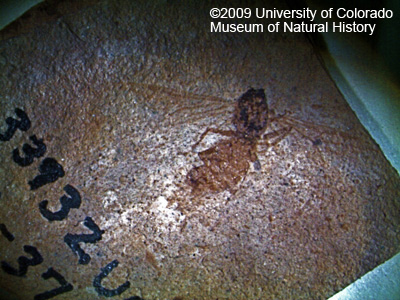

Genetic evidence suggests that ants first evolved during the mid-Cretaceous period, about 110–130 million years ago, but they didn't become dominant until after flowering plants became common. By about 60 million years ago, ants were widespread, as they are today.
By the time this fossil ant from the late Eocene Florissant Formation of Colorado (34 million years ago) crawled the Earth, dinosaurs were long gone. Perhaps this ant collected small objects like its modern relatives, the harvester ants.

The Florissant Formation is one of the world's greatest fossil sites, preserving thousands of species of insects and hundreds of species of plants in fine-grained lake shale. It is also famous for its giant petrified redwood stumps. In addition to the abundant plant and insect spiders, Florissant has also produced fossils of mammals, fish, birds, spiders, clams, and snails, making it a remarkably complete picture of an ancient ecosystem. Part of the ancient lakebeds were protected as Florissant Fossil Beds National Monument in 1969.
Learn more about the Florissant Formation at Florissant Fossil Beds National Monument.